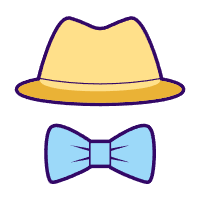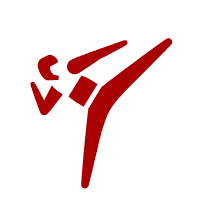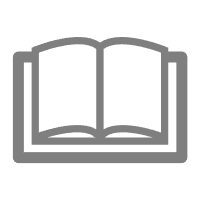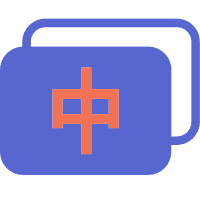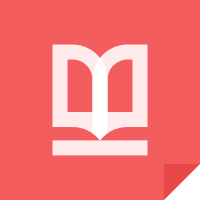-
Chinese opera – Huangmei Opera
Huangmei Opera, formerly known as Huangmei Tiao, Tea Picking Opera, etc., originated from Huangmei in Hubei and grew stronger than Anqing in Anhui. Huangmei Opera, along with Peking Opera, Yue Opera, Pingju Opera, and Henan Opera, is also known as " China's five major opera types ". It is also the main local opera-type in Anhui Province. There are also professional or amateur Huangmei Opera types in Hubei, Jiangxi, Fujian, Zhejiang, Jiangsu, Hong Kong, and Taiwan. Performance groups are widely welcomed. Huangmei Opera is a kind of drama developed from folk songs, Bangko, tea songs, tea-picking lanterns, and flower drum tunes, first in the countryside and then in the cities. It has absorbed the factors of Han opera, Chu opera, Gaoqiang opera, tea picking opera, Peking opera, and many other opera types, and gradually formed its own artistic characteristics. The singing of Huangmei Opera is simple and smooth, known for its bright and lyrical, and rich expressive power; the performance is simple and meticulous, and it is known for being real and lively. The song " Heavenly Fairy Matching " made Huangmei Opera popular in the north and south, and it has a high reputation overseas. On May 20, 2006,…...
- 0
- 0
- 55
-
Chinese opera – Yue Opera
Yue Opera -China's second-largest opera genre, also known as the second national opera, and also known as "the most widely spread local opera genre" Some people think that it is "the largest local opera-type" is called "Chinese opera" abroad. It is also one of the five major Chinese opera types ( Beijing Opera, Yue Opera, Huangmei Opera, Ping Opera, Henan Opera in order). It originated in Shengzhou, Zhejiang, originated in Shanghai, prospered throughout the country, and spread throughout the world. In its development, it has absorbed the great achievements of characteristic operas such as Kunqu Opera, drama, and Shao Opera, and has experienced a historical evolution from male Yue Opera to female Yue Opera. Yue Opera is good at lyricism, mainly singing, with a beautiful voice, real and moving performance, beautiful and elegant, and full of the spirit of Jiangnan; mostly with the theme of "talents and beautiful ladies ", there are many artistic genres, and there are 13 recognized genres. many. Mainly popular in Shanghai, Zhejiang, Jiangsu, Fujian, Jiangxi, Anhui, and other southern regions, as well as Beijing, Tianjin, and other northern regions. In its heyday, except for a few provinces and autonomous regions such as Tibet, Guangdong, and…...
- 0
- 0
- 8
-
Chinese opera – Henan Opera
Henan Opera, originated in the Central Plains (Kaifeng, Henan). Henan Opera is continuously inherited, reformed, and developed based on Henan Bangs. Together with Peking Opera, Yue Opera, Huangmei Opera, and Ping Opera, it is called China's five major opera types, and one of the largest local opera types in China. Henan Opera has also followed Henan Satellite TV, Henan Henan Theater, Taiwan Henan Opera Troupe, and other performing groups to many countries in the world. Such as: "Australia, Italy, France, Canada, and other countries." It is praised by Westerners as "Oriental Aria", "Chinese Opera" and so on. Henan opera is famous for its sonorous singing, circumstantial ambiguity, vigorous voice, clear utterance, mellow charm, vividness, flesh and blood, and good at expressing the inner emotions of the characters. It is widely welcomed by people from all walks of life due to its high degree of artistry. It was named Henan Bangzi in the early days because of its musical accompaniment with Zaomu Bangs. According to statistics from the Ministry of Culture, in addition to Henan Province, there are professional Henan opera troupes in Hubei, Anhui, Jiangsu, Shandong, Shaanxi, Shanxi, Hebei, Qinghai, Xinjiang, and Taiwan. In November 2019, the General Office of…...
- 0
- 0
- 8
-
Chinese opera – Pingju opera
Pingju opera, circulated in northern China, is one of the traditional opera genres of the Han nationality. It is one of the most popular opera genres among the people and ranks among the five major Chinese opera genres. There was a view that it was the second-largest drama in China. In the late Qing Dynasty ditty "counterpart Luna County in Hebei area lotus fall to form a" basis, first popular in the rural areas of Hebei, after entering Tangshan, called "Tangshan Zi." Pingju is divided into East Road and West Road, and Pingju is mainly based on East Road. It was popular in the Northeast in the 1920s, and a group of actresses appeared. After the 1930s, Pingju performances became more and more mature under the influence of Peking Opera, Hebei Bangzi, and other operas. Genres such as Li Jinshan, Liu Cuixia, Bai Yushuang, Xi Caelian, and Ailian Jun appeared. After 1950, plays such as " Little Son-in-law ", " Liu Qiaoer ", " Flower as a Matchmaker ", " Sister Yang Sued ", " Qin Xianglian " and other repertoires have had a great influence throughout the country. Famous actors such as Xin Fengxia, Xiao Bai Yushuang, Wei Rongyuan…...
- 0
- 0
- 2
-
Chinese opera – Beijing Opera
Peking opera, also known as Ping opera, Peking opera, etc., is the most influential Chinese opera genre, centered in Beijing and spread all over the country. Since the fifty-fifth year of the Qianlong Emperor of the Qing Dynasty (1790), the four major Hui troupes that originally performed in the south of Sanqing, Sixi, Chennai, and Hechun [1] entered Beijing one after another, cooperating with Han tune artists from Hubei. Accepted some of the repertoires, tunes, and performance methods of Kunqu Opera and Qin Opera, and absorbed some local folk tunes, and through continuous exchanges and fusion, it finally formed Peking Opera. Peking opera has a set of standardized artistic expressions in various aspects such as literature, performance, music, and stage art. The singing of Peking Opera is a variation of the style, with Erhuang and Xipi as the main voices. Peking opera accompaniment is divided into two categories: the literary field and the martial arts field. The literary field uses the Huqin as the main instrument, and the martial arts field uses the drum board as the main instrument. The roles of Peking Opera are divided into Sheng, Dan, Jing, Chou, Miscellaneous, Wu, Liu, etc. The latter three are no longer…...
- 0
- 0
- 4
-
Chinese opera – Artistic characteristics
Overview Comprehensiveness, fictitiousness, and formality are the main artistic characteristics of Chinese opera. These characteristics condense the quintessence of Chinese traditional culture's aesthetic thoughts and constitute a unique view of drama, making Chinese opera shine with its unique artistic brilliance on the stage of world opera culture. Comprehensive Chinese opera is a highly comprehensive Han folk art [9]. This comprehensiveness is not only manifested in its integration of various art categories (such as dance, acrobatics, etc.) to create new ideas but also in its exquisite performance art. Various artistic factors are closely integrated with performing arts, and all functions of opera are realized through the performance of actors. Among them, the organic composition of singing, thinking, doing, and hitting actors is the most concentrated and prominent manifestation of the comprehensive nature of opera. Singing refers to the technique of singing, and it means "the character is correct and round "; to read, that is, to recite, is a recitation technique, which requires strict requirements. The so-called "thousand cities to speak and sing in two ways"; to do, to do, to be the technique of body and expression; Refers to the martial arts in the performance, which is a combination…...
- 0
- 0
- 2
-
Chinese opera – Opera business
Overview Playing the characters in the play is a unique performance system of Chinese opera. In terms of content, Xingdang is an artistic and standardized image type of opera character. From a formal point of view, it is a classification system of performance programs with character. This performance system is a concentrated reflection of the formality of opera in the creation of characters. Every business is an imaging system and a corresponding performance program system. For example, Laosheng is an imaging system that contains a series of upright and resolute male characters over middle-aged. Such as Zhuge Liang, a wise military strategist in the Peking Opera " Empty City Plan", and Song Shijie in the Peking Opera "Four Jinshi". These characters have similar personalities and temperaments, and they also have a set of corresponding procedures in their performances. As read rhyme white, with a true voice singing; style bold, simple, pure and honest; action figures with grace, Duan Fang, solemn tone. Since such characters must wear a beard that symbolizes a beard, there is another set of kung fu on the beard. Some dramas also created a set of tricks for the characters wearing hats and hats. Another example is…...
- 0
- 0
- 4
-
Chinese opera – Opera music
Overview Opera music is a genre of Han folk music. It is one of the important artistic means to express the thoughts and feelings of the characters in the art of opera, portray the character of the characters, and set off the atmosphere of the stage. It comes from a variety of musical components such as folk songs, cry, dance, and instrumental music, and is an important part of the folk music of the Han nation. This kind of drama music has Bai Ji's unique structure, expression methods, and artistic skills, and has a strong national artistic style. From the perspective of production music, opera belongs to Chinese musical drama. It is obviously different from the musical tradition of western opera and its composers' personal professional creation. Chinese opera music has folk and formal characteristics. Chinese opera music is folk music in nature. The creation of opera music still has the nature of folk creation, and to a large extent retains several characteristics of folk music. First, opera music is rooted in the folk and has a solid mass foundation. It is closely related to local voices, folk songs, and rap music in various places. Second, the music of each…...
- 0
- 0
- 23
-
Chinese opera – Opera facial makeup
Generally speaking, the makeup of "生" and "旦" is a little application of powder to achieve the effect of fluffing. This kind of makeup is called a "jun dress". The facial makeup of the characters of "生" and "旦" is the same regardless of the number of characters. The personalities of "生" and "旦" characters mainly depend on performances and costumes. Facial makeup is mainly used for various characters in "净" and "丑" professions. It uses exaggerated strong colors and endlessly changing lines to change the original face of the actor. It is also used for "plain" and "dan" makeup. forms a contrast. The "净" and "丑" characters' hooking faces are set for each person. Although it is composed of various stylized patterns, it is a kind of personality makeup that directly expresses the personality of the character. The roles of "net" and "丑" have so many different patterns and are not the same. The deformation of the opera facial makeup is bold and exaggerated, but this kind of boldness and exaggeration is not made by smearing casually. There are certain rules and methods. Facial makeup art is very particular about composition. The dots, lines, colors, and shapes are regularly…...
- 0
- 0
- 11
-
Chinese opera – Development path
Summary Kunqu Opera "Peony Pavilion"-Garden Opera music is the musical part of Chinese Han opera, including vocal music, rhyme, and instrumental accompaniment, opening, and cutscene music. Among them, the main form of singing is singing, with solo, duet, unison, and gang singing, which are the main expression methods to develop the plot and portray the character. The accompaniment of singing, the opening, and the string play the role of supporting the tone and setting off the performance. The percussion music used in the opening, cutscene, and martial arts venues is an important factor in the noisy atmosphere, the adjustment of the stage rhythm, and the structure of the opera. Opera is a unique title of traditional drama in our country. The first to use the term opera in history was Song Liuxun (1240-1319). He put forward “Yongjia opera” in the "Person of Wu Yongzhang". What he called “Yongjia opera” is what later generations call “ Southern Opera ”, "Xiwen", " Yongjia Zazu ". Starting from the modern Wang Guowei, "Xiqu" has been used as a general term for traditional Chinese theater culture. The most significant and unique artistic feature of opera is "Qu". "Qu" is mainly composed of two…...
- 0
- 0
- 6
Checking in, please wait...
Click for today's check-in bonus!
You have earned {{mission.data.mission.credit}} points today
My Coupons
-
¥CouponsLimitation of use:Expired and UnavailableLimitation of use:
before
Limitation of use:Permanently validCoupon ID:×Available for the following products: Available for the following products categories: Unrestricted use:Available for all products and product types
No coupons available!
Unverify
Daily tasks completed

